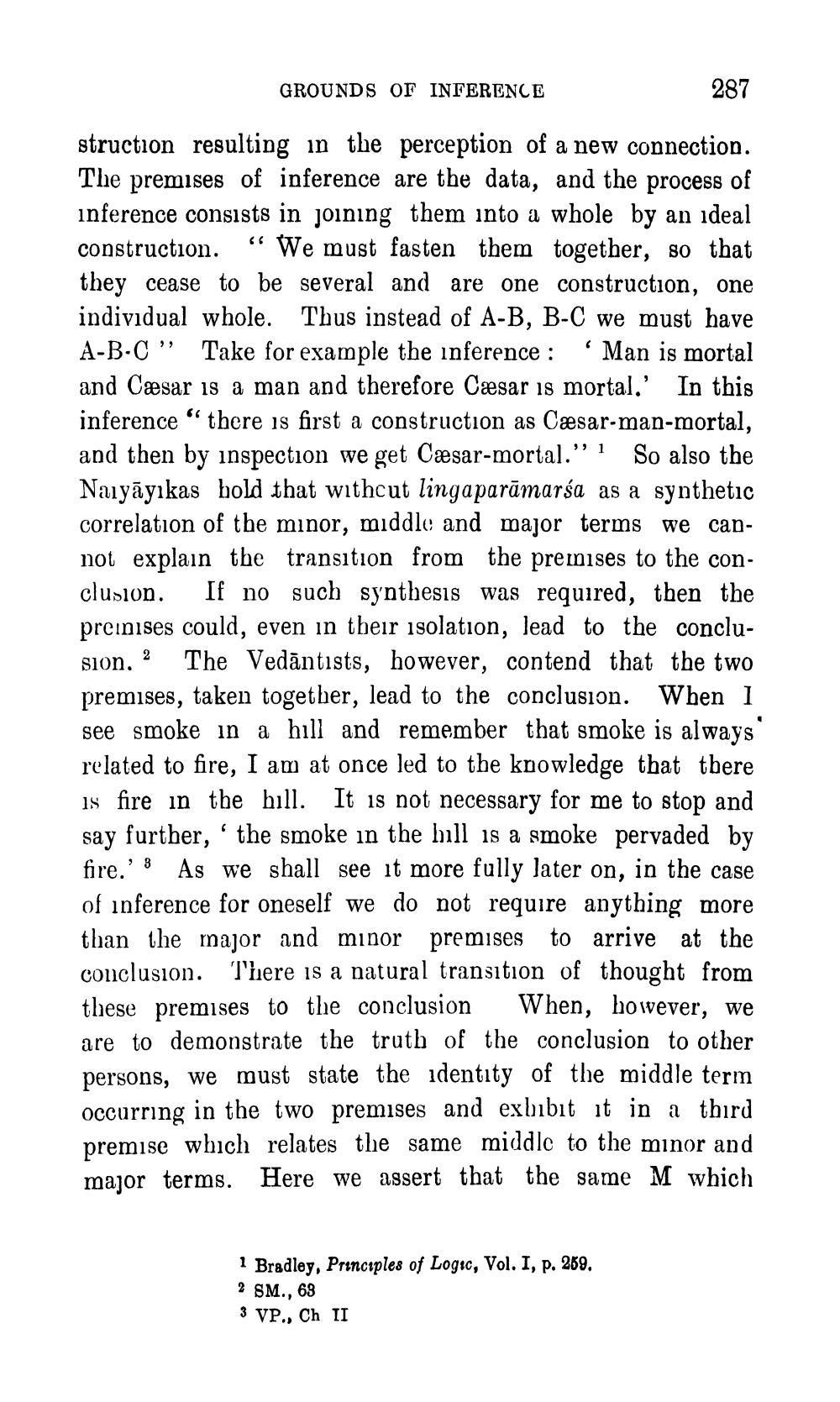________________
GROUNDS OF INFERENCE
287
struction resulting in the perception of a new connection. The premises of inference are the data, and the process of inference consists in joining them into a whole by an ideal construction. “We must fasten them together, so that they cease to be several and are one construction, one individual whole. Thus instead of A-B, B-C we must have A-B-C” Take for example the inference: 'Man is mortal and Cæsar is a man and therefore Cæsar is mortal.' In this inference “there is first a construction as Cæsar-man-mortal, and then by inspection we get Cæsar-mortal.” ! So also the Naiyāyikas bold that withcut lingaparāmarśa as a synthetic correlation of the minor, middle and major terms we cannot explain the transition from the premises to the conclusion. If no such synthesis was required, then the preinises could, even in their isolation, lead to the conclusion. 2 The Vedāntists, however, contend that the two premises, taken together, lead to the conclusion. When I see smoke in a hill and remember that smoke is always' related to fire, I am at once led to the knowledge that there is fire in the hill. It is not necessary for me to stop and say further, 'the smoke in the hill is a smoke pervaded by fire.' 8 As we shall see it more fully later on, in the case of inference for oneself we do not require anything more than the major and minor premises to arrive at the conclusion. There is a natural transition of thought from these premises to the conclusion When, however, we are to demonstrate the truth of the conclusion to other persons, we must state the identity of the middle term occurring in the two premises and exbibit it in a third premise which relates the same middle to the minor and major terms. Here we assert that the same M which
1 Bradley, Principles of Logic, Vol. I, p. 269. 2 SM., 63 3 VP., Ch II




